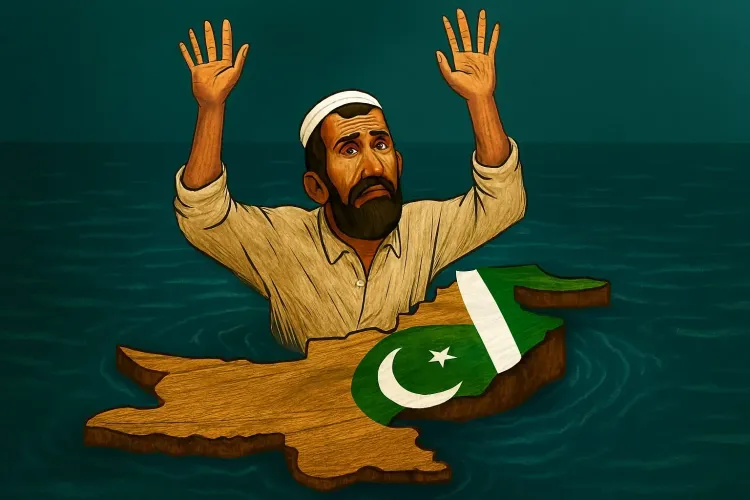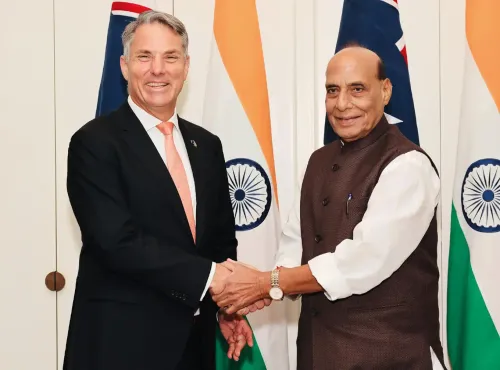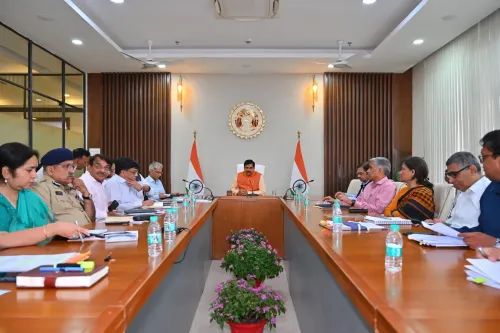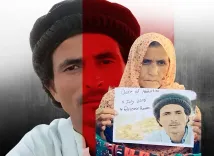Is Pakistan Facing an Unprecedented Rise in Poverty?

Synopsis
Key Takeaways
- Poverty Rate: Surged to 39% in Pakistan.
- Economic Mismanagement: Contributes significantly to the crisis.
- Natural Disasters: Have worsened food insecurity.
- Debt Crisis: Circular debt in the power sector has reached Rs 2.4 trillion.
- Urgent Reforms: Needed to prevent further entrenchment of poverty.
New Delhi, Oct 24 (NationPress) Pakistan is grappling with an escalating poverty crisis that highlights the intersection of economic mismanagement, structural inefficiencies, and environmental degradation.
The poverty rate, which had been on a downward trajectory for nearly two decades, has now surged to 39 percent, pushing an estimated 12.5 million additional people below the poverty line, as reported by Lens Asia, a media outlet from Bangladesh.
Between the fiscal years of 2020 and 2025, the nation has witnessed significant volatility in inflation, GDP per capita growth, and sectoral performance, all contributing to a dramatic increase in poverty levels, according to the article.
Continuously high energy prices and soaring core inflation have further strained vulnerable families, many of whom are already battling to fulfill basic necessities. The development of human capital has also been adversely affected, with over one-third of children being out of school in the academic year 2024–25. This exclusion is particularly pronounced among female students and younger age groups, jeopardizing long-term productivity and perpetuating cycles of poverty, the article emphasizes.
A significant factor exacerbating Pakistan's economic turmoil is the circular debt crisis in the power sector, which has ballooned to Rs 2.4 trillion as of September 2025, equivalent to 2.1 percent of the nation’s GDP.
This debt comprises unpaid dues owed to electricity companies for power that has already been consumed but not compensated for, creating a vicious cycle that stifles growth and drains public resources.
At the center of this crisis are Independent Power Producers (IPPs), private entities operating under contracts established since the 1990s that guarantee profits in U.S. dollars while protecting them from business risks.
These contracts include “capacity charges”, mandating payments for merely keeping power plants operational, and “take-or-pay” clauses that compel the government to purchase electricity regardless of actual demand.
A government inquiry unveiled that IPPs accrued Rs 1,000 billion in excess profits through inflated costs and guaranteed payments. Yet, rather than recouping these funds, the government opted to shift the burden onto citizens.
Fiscal consolidation measures have further intensified poverty. Indirect tax increases have disproportionately affected the poor, while real-term cuts in the Public Sector Development Programme (PSDP) have restricted infrastructure spending and limited labor income opportunities.
Natural disasters have intensified these economic challenges, especially in flood-affected areas throughout Balochistan, Khyber Pakhtunkhwa, and Sindh. Over 11.8 million individuals are projected to experience acute food insecurity during the winter lean season, with 2.2 million classified in Emergency (IPC Phase 4).
These regions continue to struggle with diminished crop and livestock production due to severe monsoon rains that submerged farmland and caused disease outbreaks among animals.
Amid this economic fragility, Pakistan’s currency appears deceptively stable. As of September 2025, the USD/PKR exchange rate is at 282.01, having slightly strengthened over the past month while declining 1.94 percent over the previous year.
This apparent stability, however, is the result of one of the most aggressive currency manipulation efforts in emerging market history.
The State Bank of Pakistan has purchased $9 billion from the interbank market over the past nine months to artificially inflate reserves and stimulate demand for the rupee, despite market fundamentals indicating otherwise.
Pakistan’s foreign exchange market remains vulnerable due to its limited structure, with a daily turnover of merely $200-300 million.
Central bank interventions currently account for 30-40 percent of daily volume, distorting price discovery and making stability increasingly expensive to maintain as pressures continue to mount.
Without immediate reforms, Pakistan faces the risk of entrenching poverty for millions more, undermining its development objectives and destabilizing its social fabric. The facade of stability cannot conceal the growing reality of deprivation, and the time for corrective action is swiftly diminishing, the article concluded.









